10 Iconic Floral Still Lifes You Need to Know
Flowers have long been a central theme in still-life painting. Each flower carries its own symbolism. For example, they can represent innocence,...
Errika Gerakiti 6 February 2025
Commedia dell’arte is a form of theater popular from the 16th to the 18th century. The name means comedy of art indicating that the performers were artisans, that is professional actors. Commedia dell’arte originated in northern Italy and quickly took Europe by storm. The performances were both scripted and improvised. The Commedia dell’arte characters involved were always the same and always stereotypical, such as Harlequin or Pierrot. From its inception but also long after, artists were captivated by the colorful costumes and lighthearted themes.
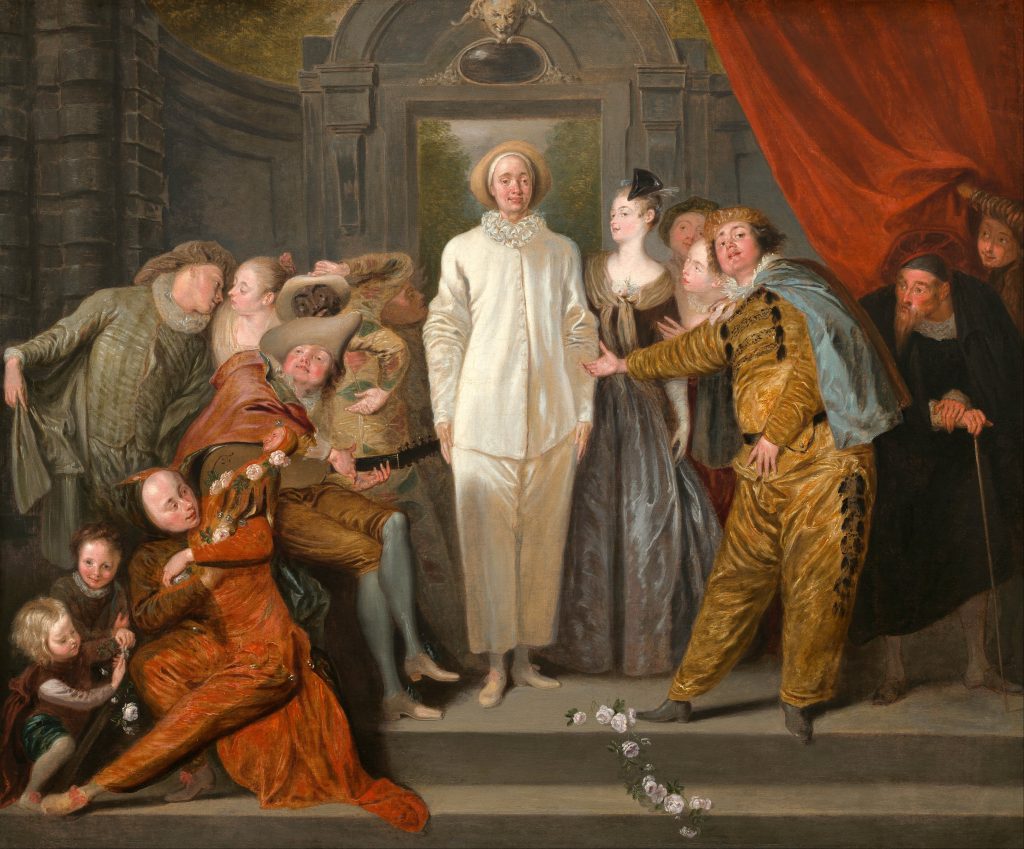
The world of the theater fascinated Antoine Watteau, especially the improvisational nature of commedia dell’arte. On the canvas, 15 actors wearing their characteristic costumes are standing on stone steps. In the center, wearing a white outfit, is Pierrot, a naïve clown. Next to him is Flaminia, Pierrot’s object of desire who constantly refuses his love. In front of them presenting the troupe is Scaramouche, another clown, dressed in yellow and black. On the left we see other characters, Mezzetin playing the guitar and the popular Harlequin, in a red and green diamond costume.
A small garland of flowers at the actors’ feet suggest that they are bowing after a performance.
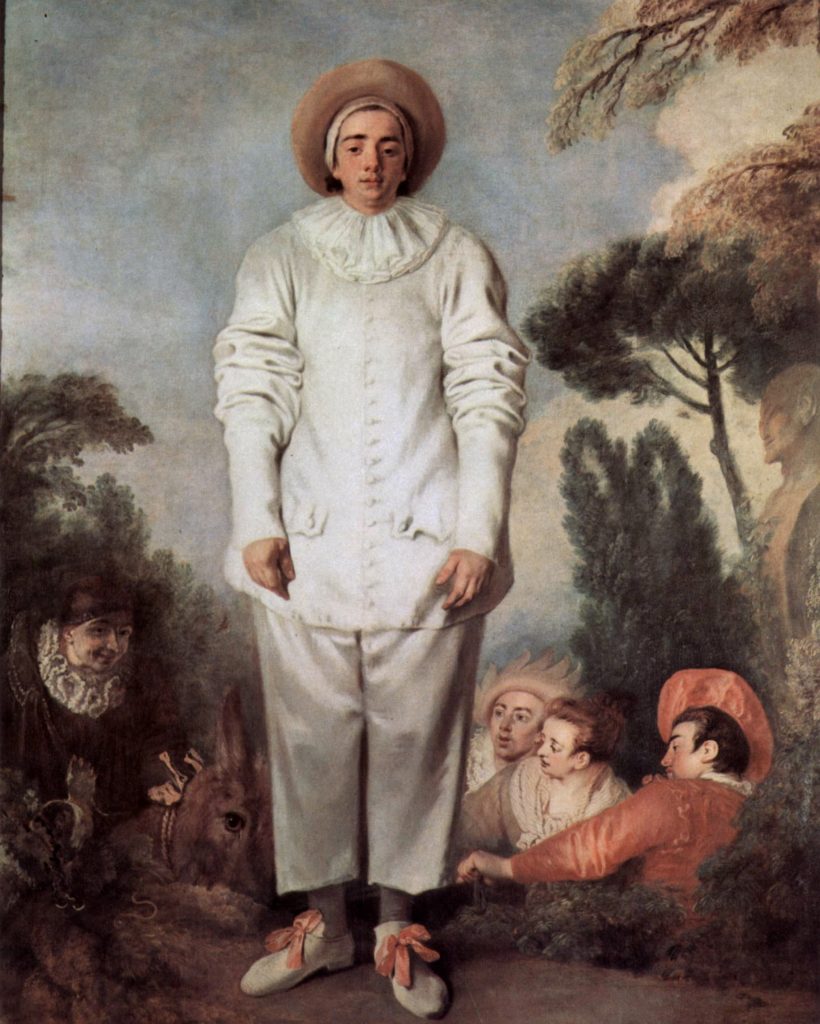
Watteau also made portraits for some of the characters. First, there is Pierrot. He stands full frontal in his white costume with a sad look on his face. Some suggest that the painting is actually a self-portrait, while others believe that its a sign for a café of a former actor. (Watteau is known for painting shop signs). Behind Pierrot other characters are painted in half-length. We see the Doctor on his mule, he is a parody of the educated elite and an obstacle to young love, a pair of lovers and the Captain, a greedy and opportunistic man, very full of himself.
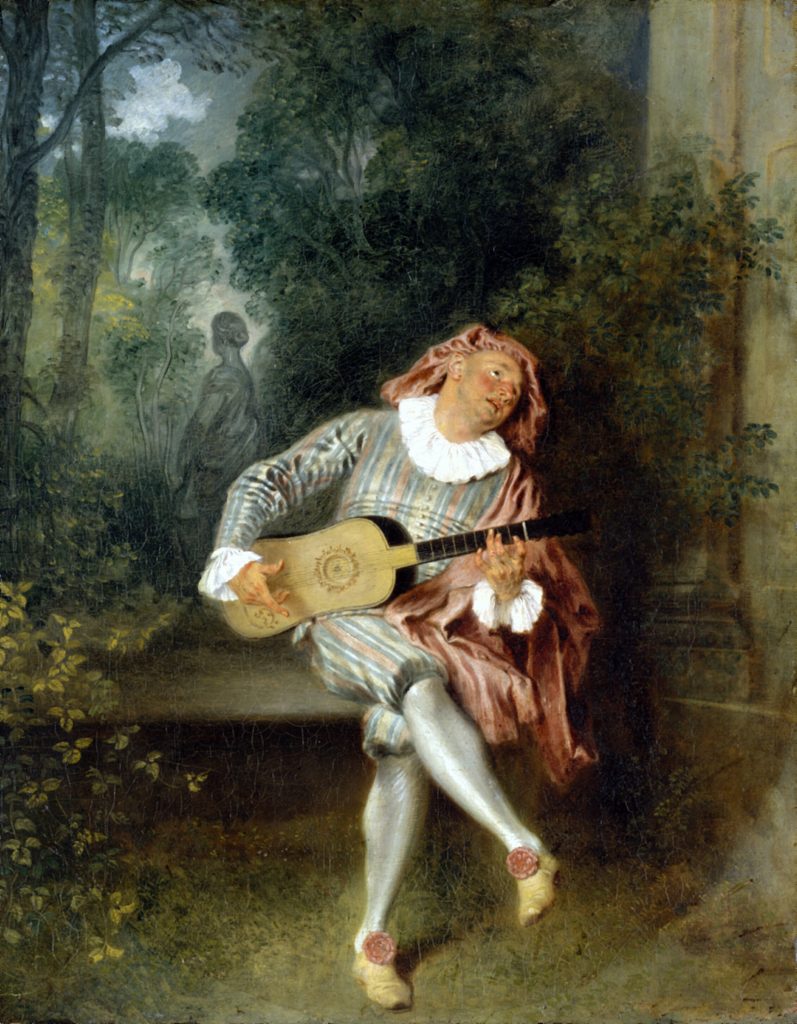
Mezzetin is a sly troublemaker but often shown as musically inclined. In this painting he is mourning a lost love, as indicated by the female statue behind him with its back to him.
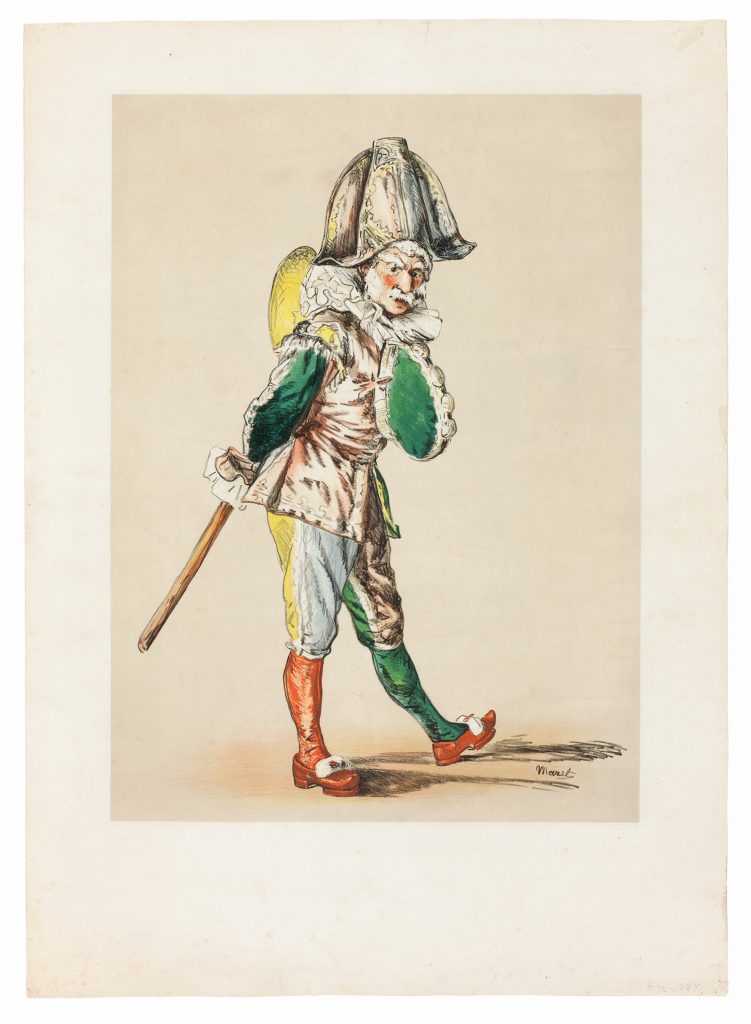
Édouard Manet used the satirical nature of commedia dell arte. Pulcinella or Punch is one of the servants. He is hunchbacked, always ill-tempered and looking out for himself. He wears his traditional costume with comically puffed sleeves and carries a baton. In this lithograph, his face is modeled after Patrice de MacMahon, the newly elected president of the Third Republic and a general who led the violent retaliation after the Parisian Commune in 1871. This is essentially a political cartoon. Manet wanted to publish a larger version in the liberal newspaper Le Temps but the police destroyed all copies.
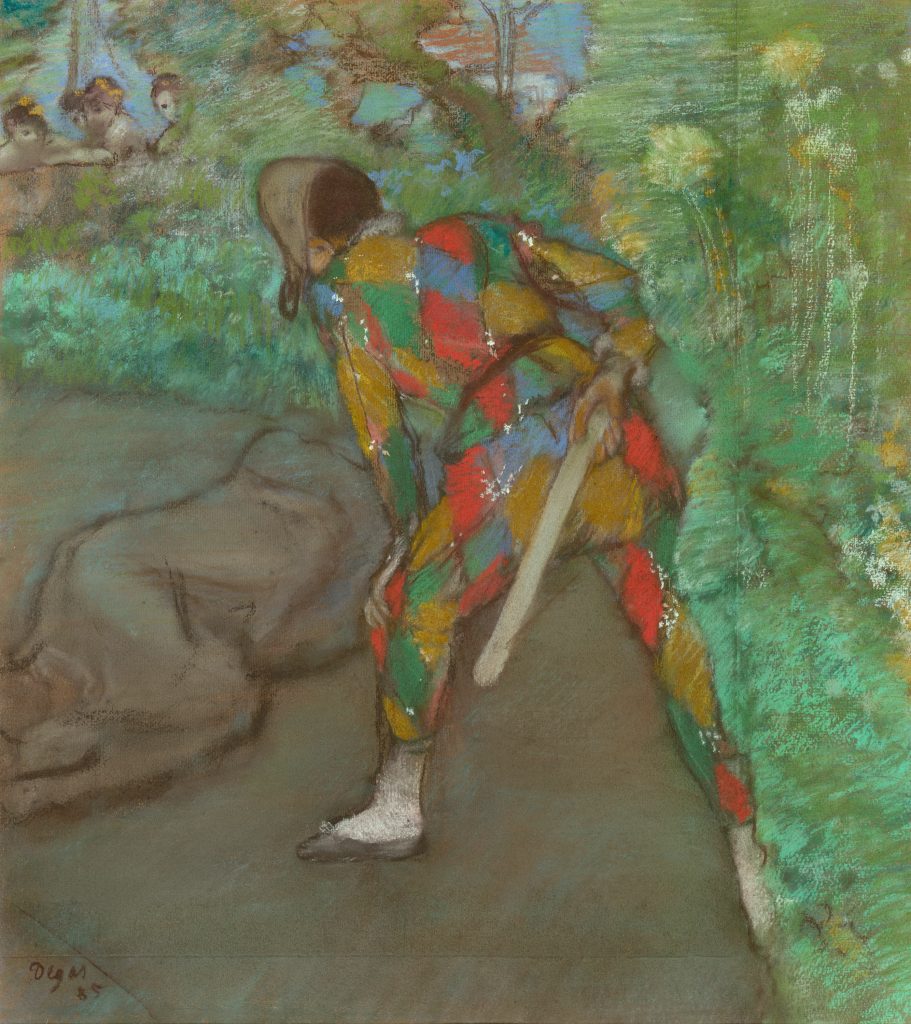
It is well known that Edgar Degas frequented the Parisian opera. In this pastel we see a scene from a revival of the commedia dell’arte play The Twins of Bergamo as a comic opera. The play follows two brothers, Harlequin senior and Harlequin junior, as they arrive in Paris and fall in love with the same woman. In this scene Harlequin senior has beaten up the cloaked suitor of his beloved, only to realize in the next scene that it is actually his brother. Due to his contacts in the opera, Degas was able to attend rehearsals and a trial run. The revived play featured a ballet as well, in the top right among the lush foliage we can see some ballerinas watching the scene.
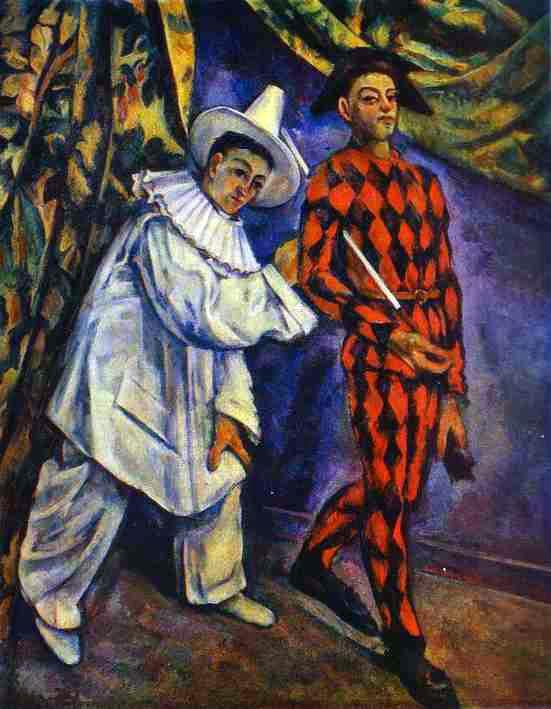
As time goes by, the characters of commedia dell’arte have become very well integrated within European culture. So much so that they were (and still are) used as carnival costumes. In 1888, Cézanne painted his son Paul dressed as a Harlequin along with his friend Louis Guillaume in Pierrot’s costume. The children had donned their costumes for Mardi Gras or Fat Tuesday festivities, the French tradition of eating rich foods before the fasting of the Lenten season.
In the paining, the white, loose figure of Pierrot contrasts with the lean figure of Harlequin. As in the costumes, we can see their different temperaments in their faces as well.
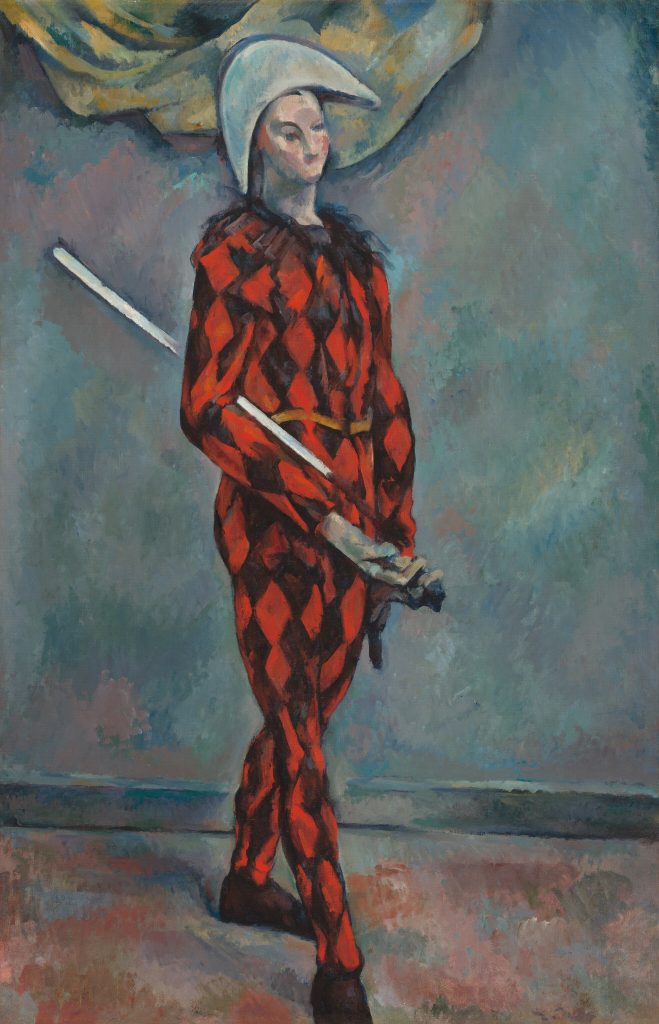
Around the same time, Cézanne did some works focusing on the solitary nature of Harlequin. Moving further into abstraction, the face of the boy has been replaced with a mask.
Picasso often used commedia dell’arte characters, especially in his early work from the Rose Period.
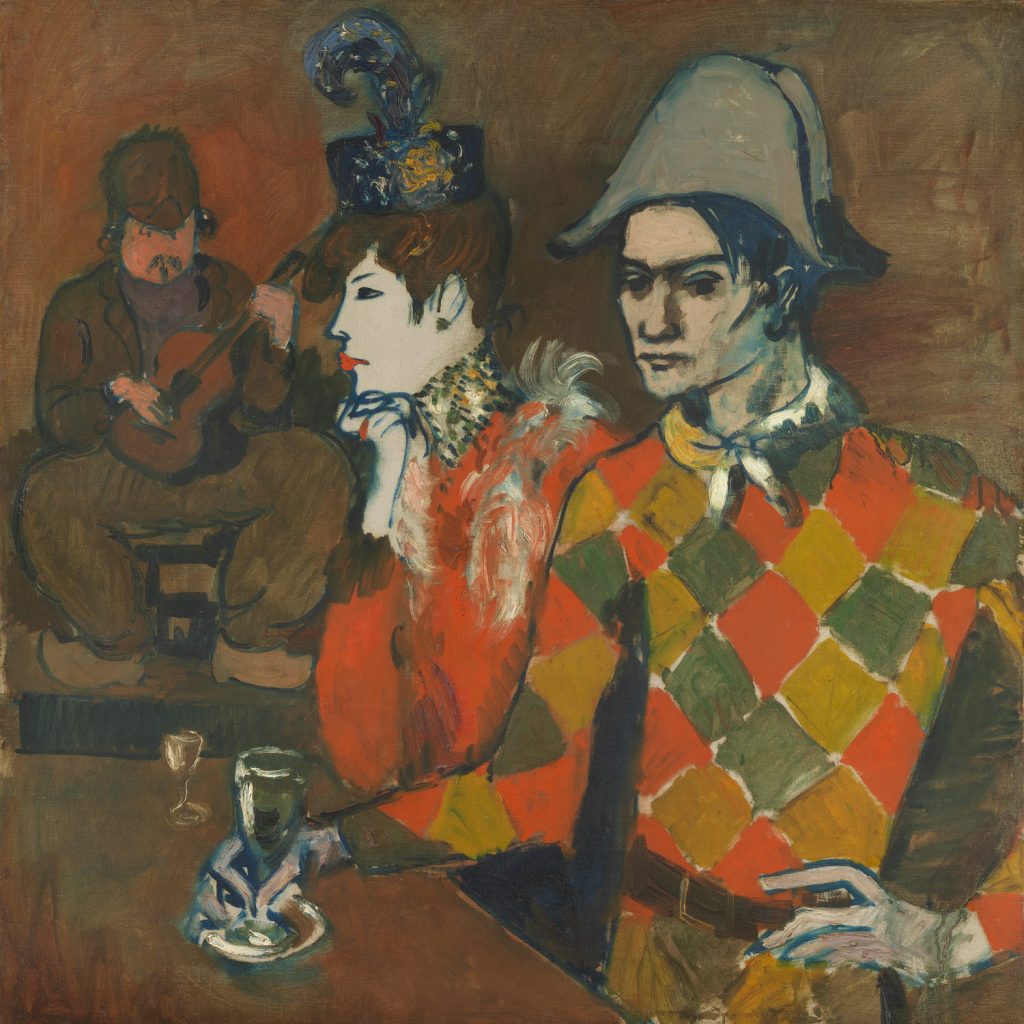
In At the Lapin Agile, the free-spirited nature of Harlequin seems to appeal to him, as he presents himself dressed in the distinctive checkered costume. Along with the artist is his lover at the time, Germaine Pichot. In the background, playing a guitar is the man who commissioned the painting, Frédé Gérard.
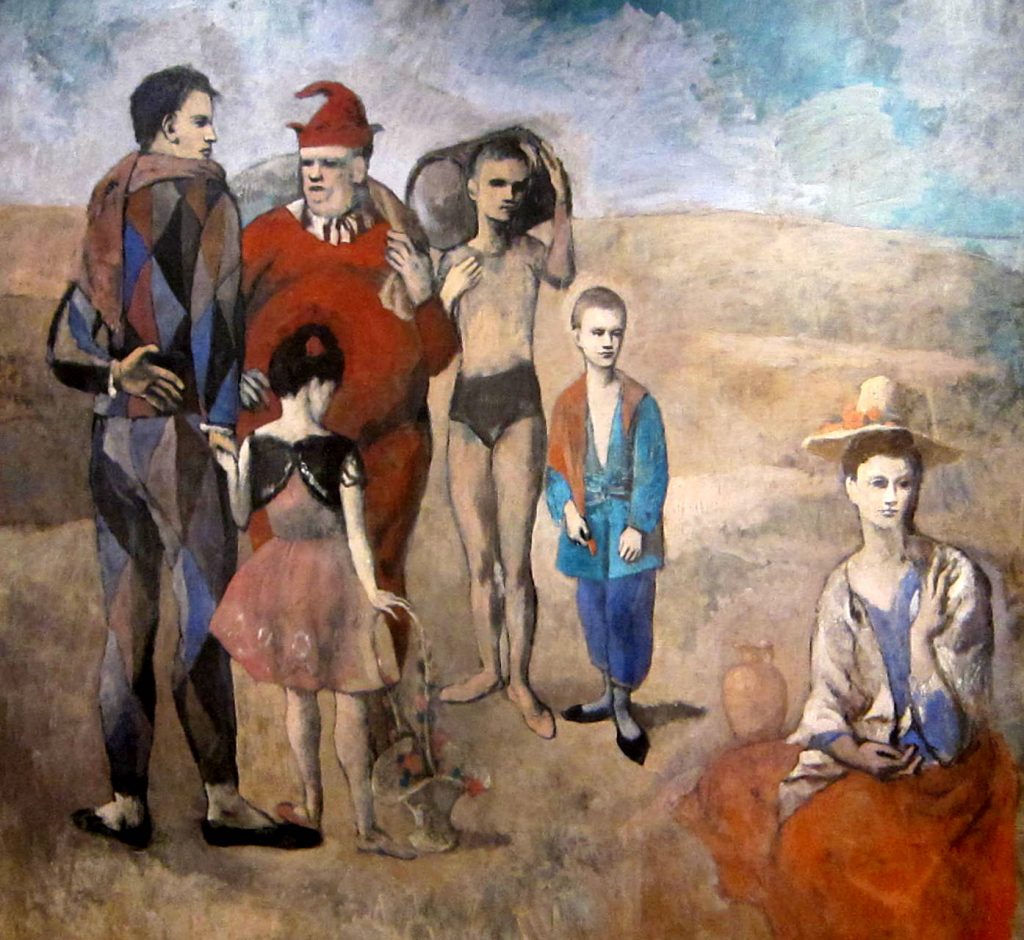
Picasso as a Harlequin makes another appearance in Family of Saltimbanques.
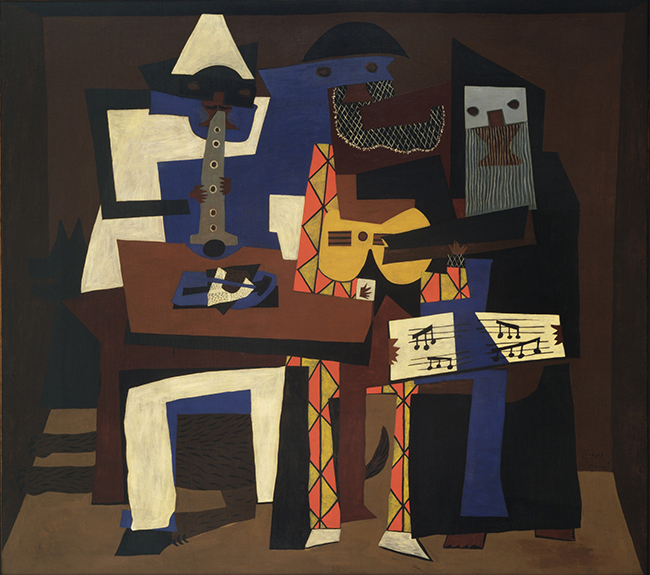
Finally, in 1921’s The Three Musicians, Pierrot and Harlequin play music with the company of a monk. The figures are rendered in cubist style, their pieces fitting together like a puzzle. The broad plains of pure color make this oil painting look more like a collage.
The tradition of commedia dell’arte characters is well represented in the visual arts. Some like Watteau and Degas, focused on the actors and the characters they embodied. Others, like Manet, saw an opportunity for satire and political commentary, meanwhile others, like Picasso, saw something in themselves.
DailyArt Magazine needs your support. Every contribution, however big or small, is very valuable for our future. Thanks to it, we will be able to sustain and grow the Magazine. Thank you for your help!